This is the first installment of the personal story of Amy Uebellhoer, a Speech-Language Pathologist and Director of Rehab for Infinity Rehab at Alpine Fireside Health Center in Rockford, IL. Amy was diagnosed with Chiari Malformation – a rare, congenital brain disorder – in 2008. She has undergone multiple surgeries to treat the condition and now shares the unique perspective of being both the therapist and the patient.
By Amy Uebellhoer
When I awoke in the ICU after my first brain surgery two things were immediately apparent: I was in excruciating pain and I couldn’t move. All I could think of was I had become like one of my patients. I was on a level playing field with all the brain injury and brain surgery patients I had treated over the nearly 20 years I worked as a Speech-Language Pathologist. Knowing that I was utterly dependent on others post-surgery left me scared because I knew all too well how difficult my patient’s lives are.
It was only a matter of time and circumstance when my need for brain surgery arose. I have Chiari Malformation (CM) Type 1. CM is a rare congenital brain disorder. When I was born, my skull was smaller than my brain and as a result when my skull fused it pushed the bottom part of my brain, the cerebellum, down onto my spinal cord. The added pressure on both my brain and spine caused many symptoms and problems over the course of my life.
The symptoms ranged from mild to severe and varied from excruciating headaches to issues with motor functions. Symptoms in people diagnosed with CM can be widely different from case to case. The most common symptoms include, but are not limited to: severe headaches, dizziness, confusion, memory problems, speech difficulties, dysphasia, balance disorders, difficulty walking, confusion, numbness/tingling in the arms/legs, chronic pain in the head, neck and shoulders, nausea, vomiting, blackouts, loss of vision, breathing difficulties as well as an irregular heartbeat.
The symptoms of CM are similar to many other health issues and as a result it is difficult to diagnose. Sometimes it can take until a person is well into adulthood before an accurate diagnosis is made. It took almost 36 years until I received the diagnosis that changed my life forever. Like most sufferers of CM, the road that eventually led to my diagnosis was a long and winding one.
I have always had horrible headaches. There are pictures of me as a baby holding my head. As CM is rare, affecting approximately 300,000 people in the US, and has only recently become easier to diagnose with the advent of CT scans and MRI’s, I went through what many CM patients go through. Eye exams, glasses, told it was all in my head, I was making excuses to get out of certain classes at school, that it was just a behavior problem or maybe that it was all psychological. I was diagnosed with migraines at 25 and placed on many medications, which none really seemed to help. I couldn’t understand why every time I sneezed very hard, I had an instant mind numbing headache. Again, my neurologist the time told me “that simply doesn’t happen” and it was “just a coincidence.”
Frustrated, I continued on. A fall from a ladder in 2008 changed my life forever. I fell hitting my head, neck and upper back on the edge of a high back chair. I lost consciousness for about 30 minutes and laid on the floor. Finally, when I came to, regained enough strength and some of the pain subsided I was able to get up. Naturally, I went to the hospital to see if anything was broken. After a CT scan showed all my bones were intact the attending doctor told me they found an incidental diagnosis – Chiari Malformation.
The fall was in March and by October my headaches were more frequent and rose in intensity. I asked my neurologist if this had anything to do with the CM and she said “no, can’t imagine why it would.” By the following March, I couldn’t take the headaches anymore and I started to notice other problems with my body that worried me. I was losing my balance and my gait was wobbly. As an SLP I had the education and personal experience working with patients to know when things with my body were right and when they were not.
I spent a lot of time searching for information on CM and was surprised at how little was available. I finally found a wonderful organization called Conquer Chiari (www.conquerchiari.org). I spent hours sifting through all the information on the website until I was sure all the misunderstood symptoms I’ve had over the years stemmed from CM. I returned to my neurologist and presented her with what I had found. She wanted to put me on more meds and I said I wanted a second opinion. An MRI was done and I was then referred to a neurosurgeon.
Upon meeting the neurosurgeon I realized that this was way more serious than I ever thought. He told me that my cerebellum (the lower part of the brain that controls many important day-to-day functions) was herniating through the bottom of my skull and out around my spinal cord. It was to the point were the cerebellum’s function was becoming severely compromised. He said I had no option and that I needed an emergency craniotomy to salvage my cerebellum. I was told that If I didn’t go through with the surgery that I was six months or less from a major stroke.
My surgery was then set for May 13, 2009. Up to the actual date of the surgery my symptoms rapidly increased and my condition declined. I had daily headaches, lost feeling in my left foot, leg and hand, my right hand was tingly and I would drop things, my memory became impaired, finding the words I wanted to say was difficult and I was cranky and irritable. I had a hard time just getting through the day. I was ready for whatever it took to get better.
I underwent a craniotomy, craniectomy, duraplasty, removal of my occipital bone (which I still don’t have!) and a laminectomy. When I awoke, I found out that the device that held my head in place during the surgery had broke and fractured my skull. So not only did I have a 12″ scar on the back of my shaved head, I had a fractured skull on the right side. I was stunned to realize I could not even turn my head. I had to call a nurse to turn it for me. I could only minimally see out of one eye, my swallowing was difficult and I couldn’t get more than a small sip of water down. I needed two staff nurses to roll me in bed, so sitting up or even walking were out of the question.
My surgeon said the surgery was a “success” but I begged to differ with the way I felt. He said that it would take up to two years for me to heal, so I was not very positive about my recovery. Three days later I was sent home from the hospital. It was a very difficult recovery as the headaches were unbearable and I was unable to keep any food down. The recovery period was a time of great angst and fear as I faced the uncertainty of my outcome. I just wanted to hide in a dark, quiet room where no one could bother me. It really was a difficult recovery as I had never been through anything this severe in my life.
It was very hard to express to others what I was going through as they couldn’t entirely relate to the deficits and/or the pain I experienced. I am thankful for those who supported me, I wasn’t always the easiest to get along with during this difficult time and I just shut down. The headaches and some mobility issues began to subside between the third and fourth week of my recovery. Four weeks to the day after my surgery I was back at work with Infinity Rehab working half days as a SLP. I couldn’t believe how far I had come in such a short time.
However, my recovery soon slammed into a proverbial brick wall when I noticed there was a lump forming where the bone from my skull was removed.
The second part of Amy’s story can be read by clicking here.






